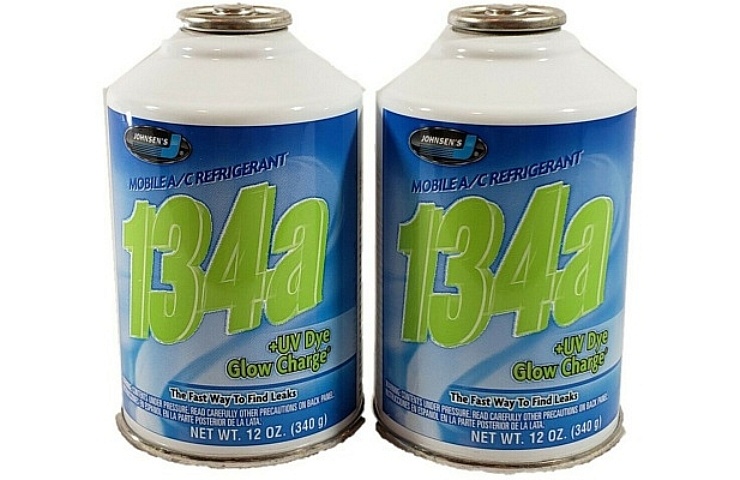As the summer approaches, it’s the right time to get your AC blowing ice-cold air. Back in the day, that might mean a recharge of Freon, also known as R12 refrigerant. But Freon was shown to deplete the earth’s vital ozone layer. So carmakers were mandated to stop using R12 after the 1994 model year.
One current replacement refrigerant is R134a, which serves the same purpose as Freon but is less harmful to the environment. Freon is the well-known trademarked name for dichlorodifluoromethane gas. It doesn’t deplete the ozone layer.
A newer refrigerant, R-1234yf (or Chemours Opteon YF) is in use by new car makers. More than 80 million cars already use this refrigerant. R-1234yf results in fewer greenhouse gas emissions than R134a. The newer R-1234yf refrigerant uses left-handed threaded fittings. So it should be obvious which system is in your vehicle. The two refrigerants cannot be mixed together.
Older non-automotive devices that rely on refrigerants, like home air conditioners and refrigerators, will face similar issues with cooling compounds. In December 2020, the federal government passed the American Innovation and Manufacturing (AIM) Act, authorizing the Environmental Protection Agency to regulate the phasing-out of R134a. Newer cars are already transitioning to R-1234yf.
Certification Required

Here’s how that happened. As R12 became scarce, garages and warehouses discovered a supply of the stuff, which is available to buy on eBay Motors and elsewhere. To be clear, it’s against the law to manufacture Freon. But it’s still perfectly legal to sell R12 refrigerant.
Sellers might require proof of the EPA 609 certification needed to service refrigerant in cars. Certified technicians ensure that correct measures are taken to avoid Freon escaping into the atmosphere.
Out with R12 Refrigerant, In with R134a

The old Freon must be captured and recycled. This typically requires specialized equipment. You can swap out the service ports to match to the standard R134 hoses. eBay Motors has all the parts you need for this upgrade.
Other compounds are touted as replacements for Freon R12 refrigerant. But the industry generally favors the R134a replacement. Conduct your own research to remove doubts about the legality (and eco-friendliness) of any substitute other than R134a. Unfortunately, converting an air conditioning system to use R-1234yf refrigerant is expensive. R134a is still available so the transition is likely to take place over years.
How To Restore the Icy Chill

You can easily add new refrigerant using a supply hose (including a pressure gauge) and an adequate supply of refrigerant (or a complete recharge kit).
Most systems also require a small vial of oil to be added to keep the seals adequately conditioned and flexible.
Check to see if the refrigerant already has oil added. If you plan to add oil, keep in mind that the oils used for R12 and R134a are different. Please don’t mix them up.
Here’s a piece of expert advice. Try adding dye to the refrigerant as well. If there’s a leak in your AC system, the dye will help you visually identify the leak area. Just pour a small amount of the liquid dye into your supply hose before adding the refrigerant. Be careful not to spill the dye over the engine compartment.
The Steps
- Connect the supply hose to the can of the R134a refrigerant.
- Use the trigger or valve on the supply hose to purge the air out of the supply hose.
- Now connect the other end of the hose with a snap-on fitting to the port on the low-pressure side of the system.
- Start the car and turn on the air conditioner, ensuring the compressor is engaged.
- Use the trigger/valve to allow refrigerant to enter the system.
- Watch the gauge on the supply hose to determine when to stop adding the Freon. Most gauges use a color scheme to indicate when your pressure is in the good range. Don’t exceed the recommended pressures.
- Add the Freon in short bursts of five seconds and observe the gauge.
- Keep an eye on the gauge for a few moments after reaching the proper pressure to verify the pressure is steady.
- Turn off the car and remove the supply hose from the port.
If the system maintains the refrigerant charge, but the air conditioner is still blowing warm air, you’ll need to troubleshoot. Learn more: How to Diagnose Air-Conditioning Problems.






